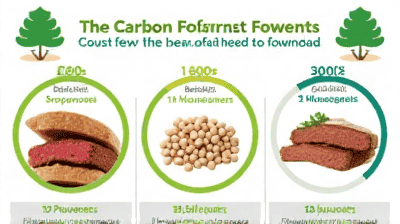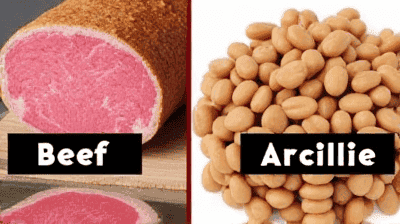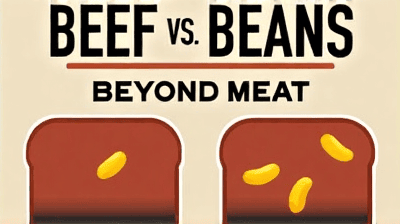
As global awareness of climate change and environmental sustainability continues to grow, consumers are increasingly examining the carbon footprints associated with their food choices. What we eat not only affects our health but also impacts the planet. Among the most debated topics in sustainable agriculture is the environmental impact of animal versus plant-based foods, particularly when it comes to protein sources.
A carbon footprint is the total amount of greenhouse gases emitted directly or indirectly by an individual, activity, or product, measured in units of carbon dioxide equivalents (CO2e). In the context of food production, the carbon footprint encompasses emissions from farming, processing, transportation, and consumption.
Measuring carbon footprints is essential for several reasons:
Climate Change Mitigation: Understanding the carbon emissions associated with various foods helps consumers make choices that can reduce overall greenhouse gas emissions and combat climate change.
Sustainable Agriculture: By identifying foods with lower carbon footprints, we can promote sustainable agricultural practices that minimize environmental impacts and support ecosystem health.
Informed Consumer Choices: Knowledge of carbon footprints empowers consumers to align their dietary habits with their values, such as environmental sustainability, health, and ethical considerations.

Beef is widely recognized for having one of the highest carbon footprints among food products. The production process involves several stages that contribute to greenhouse gas emissions:
Land Use: Cattle require significant land for grazing or feed crops. Deforestation to create pastureland releases carbon dioxide into the atmosphere.
Methane Emissions: Cattle produce methane, a potent greenhouse gas, during digestion through a process called enteric fermentation. Methane has a global warming potential over 25 times greater than that of carbon dioxide over a 100-year period.
Feed Production: The production of feed crops (such as corn and soybeans) for cattle also generates emissions due to fertilizer use, land disturbance, and energy-intensive farming practices.
Water Use: Beef production is water-intensive, requiring large amounts of water for animal care and irrigation of feed crops. This can lead to water scarcity in certain regions.
On average, the carbon footprint of beef is estimated to be approximately 27 kilograms of CO2e per kilogram of beef produced. This figure can vary based on factors such as farming practices, location, and feed sources. The following breakdown illustrates the emissions associated with beef production:
Given these factors, reducing beef consumption is often recommended as an effective strategy for individuals looking to decrease their personal carbon footprints.
Beans, particularly legumes such as black beans, kidney beans, and lentils, are known for their low carbon footprints and numerous health benefits. The production of beans involves several environmental advantages:
Nitrogen Fixation: Beans are legumes that can fix atmospheric nitrogen into the soil, reducing the need for synthetic fertilizers that can contribute to greenhouse gas emissions.
Lower Land Use: Compared to animal agriculture, bean production typically requires significantly less land, resulting in reduced deforestation and habitat destruction.
Reduced Emissions: The carbon emissions associated with bean production are minimal due to the efficiency of legume farming practices and their ability to improve soil health.
The carbon footprint of beans averages about 0.8 kilograms of CO2e per kilogram of beans produced, making them one of the most sustainable protein sources available. The emission breakdown for beans includes:
These characteristics make beans an ideal food choice for those seeking to minimize their environmental impact while still obtaining high-quality protein.

Beyond Meat represents a growing trend in the food industry, providing plant-based alternatives to traditional meat products. The production process for Beyond Meat involves sourcing plant proteins, primarily from pea protein, and formulating them into familiar meat-like textures and flavors.
Sourcing Ingredients: The ingredients for Beyond Meat products are primarily plant-based, with a focus on protein extraction from sustainable crops. This approach allows for reduced land and water use compared to conventional meat production.
Lower Greenhouse Gas Emissions: Beyond Meat’s production process aims to minimize greenhouse gas emissions through optimized farming practices and sustainable ingredient sourcing.
Water Conservation: Plant-based alternatives typically require significantly less water compared to beef production, contributing to water conservation efforts.
The carbon footprint of Beyond Meat products is reported to be approximately 3.5 kilograms of CO2e per kilogram of product. This figure represents a considerable reduction compared to traditional beef. The emissions breakdown includes:
Overall, Beyond Meat products offer a sustainable alternative to conventional beef, aligning with consumer demand for lower-impact protein sources.
To illustrate the difference in carbon footprints, here is a summary of the average emissions per kilogram for each protein source:
This comparison highlights the stark contrast in emissions associated with each protein source, emphasizing the substantial environmental benefits of choosing plant-based options over traditional beef.
While carbon footprints are an essential factor in assessing sustainability, other environmental aspects should also be taken into account:
Biodiversity: Livestock farming, particularly cattle ranching, can lead to habitat loss and decreased biodiversity. In contrast, legume farming often supports diverse ecosystems.
Water Use: The water intensity of beef production makes it a less sustainable choice compared to beans and Beyond Meat alternatives, which utilize fewer resources.
Land Use: The land required for beef production significantly outweighs the land needed for beans and plant-based substitutes, further underscoring the need for more sustainable protein sources.

In addition to environmental impacts, considering the nutritional aspects of beef, beans, and Beyond Meat is essential for making informed dietary choices. Here is a brief comparison of their nutritional profiles:
Beef: Rich in protein, iron, zinc, and vitamin B12, but often high in saturated fats and cholesterol. Some cuts can be less healthful due to the increased fat content.
Beans: Excellent source of plant-based protein, dietary fiber, and several vitamins and minerals such as folate and potassium. Beans provide a low-fat, nutrient-dense option that can support heart health and digestion.
Beyond Meat: Offers protein comparable to beef while being lower in saturated fat and cholesterol. While processing means some micronutrients are added, it may lack some nutrients naturally found in whole foods.
A shift to plant-based diets has gained momentum for both health and environmental reasons. Studies indicate that diets rich in plant-based foods can reduce the risk of chronic diseases while also minimizing individual carbon footprints. Adopting diets that emphasize legumes and plant-based proteins—such as Beyond Meat—can help enhance overall health while aligning with sustainability goals.
Incorporate More Plant-Based Foods: Increase your intake of beans, lentils, and other plant-based proteins to reduce reliance on meat and lower your carbon footprint.
Choose Sustainable Meat Options: If you consume animal products, select sustainably sourced or pasture-raised meats while limiting red meat consumption.
Support Local and Organic Farmers: Purchasing from local farmers and supporting organic practices can reduce transportation emissions and contribute to sustainable agricultural practices.
Educate Yourself: Stay informed about food sources, production methods, and the carbon footprints associated with the items you buy.
Plan Meals Wisely: Reduce food waste by planning meals, using leftovers creatively, and composting food scraps.
As consumers, our choices and purchasing power can help shape the food system. Advocating for policies that support sustainable agriculture, such as subsidies for plant-based protein production and land preservation initiatives, can further promote a sustainable food system.
The carbon footprint of our food choices holds significant implications for both our health and the environment. Beef production presents substantial environmental challenges, while beans and plant-based alternatives like Beyond Meat emerge as favorable options for sustainable consumption. By making conscious choices that prioritize plant-based proteins, consumers can actively participate in reducing carbon emissions and promoting sustainable agricultural practices.
In a world where the impact of climate change is increasingly apparent, understanding the carbon footprints associated with our food is crucial. Shifting diets towards more sustainable options can not only benefit individual health but also contribute to a healthier planet. Together, we can build a food system that nourishes our bodies and protects our environment for generations to come.